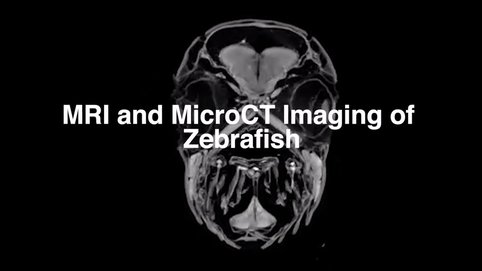
Small Animal Imaging
Noninvasive, high-resolution small animal imaging systems have emerged as important tools for laboratory animal research and a variety of different modalities are available for researchers. Our facility comprises Small Animal Magnetic Resonance Imaging (MRI) and Micro X-ray Computed Tomography (µ-CT).
Facilities and Equipment
We work with a horizontal 7.05 T Bruker PharmaScan, operating at 300,51 MHz for 1H and a gradient field strength of 760mT/m, which we use to investigate organs (heart, vessels, brain, lung, etc.) and extremities of small animals like rats, mice, newts and zebrafish. The nominal bore size of the magnet is 16 cm, with inserted gradient system and rf (radio frequency, RF) coils the maximal useable bore size amounts at the moment to 6 cm.
Using Paravision 6 for imaging and TopSpin 3.1 for high resolution spectroscopy allows us to use a 1H array cryoprobe as well as a 3He surface cryoprobe with an integrated 1H resonator. Both coils, as well as the preamplifiers are helium-cooled: Working at low temperatures of about 20 K results in an increase of sensitivity up to a factor of 2.5, a higher spatial resolution and shorter scan times. We have at our disposal three planar surface resonators (receive-only) with an inner diameter of 10, 20 and 30 mm and a transmit-only volume resonator (72 mm) for different applications with small and well defined regions of interest. Additionally volume resonators with an inner diameter of 1.3, 2.5, 3.5, and 6.0 cm are available; partially our resonators are designed and constructed at our institute.
